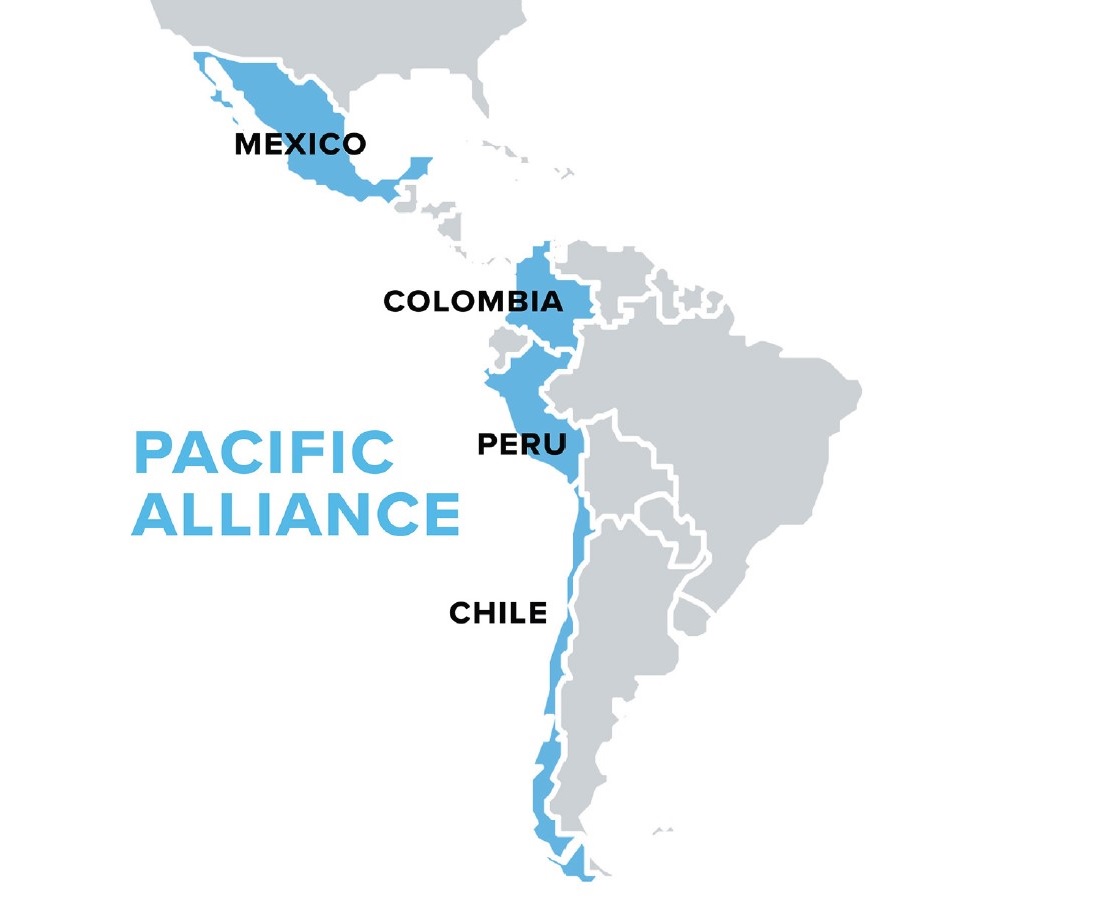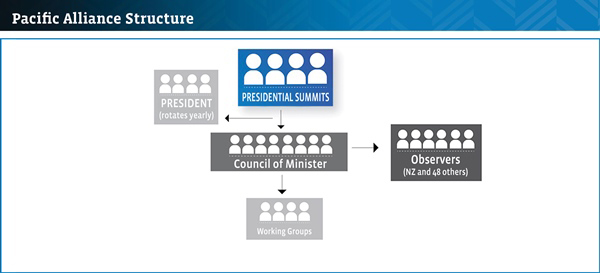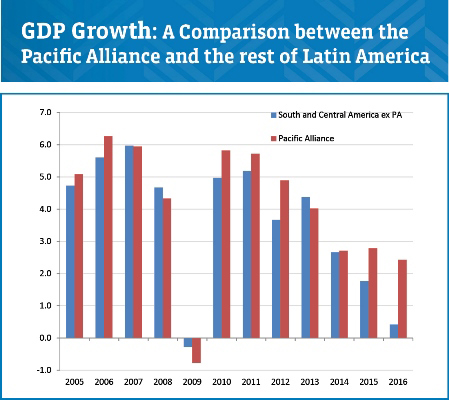Find the latest news for Pacific Alliance
On this page
New Zealand has a long-standing relationship with the Alliance and with each of its members. We were one of the first to become an observer country in 2012. On 30 June 2017 New Zealand launched free trade agreement negotiations with the Pacific Alliance. Once negotiations are completed, we will become an associate member.
Pacific Alliance is a pathway to Latin America
-
The Government is committed to deepening New Zealand’s relationships in Latin America.
-
Gaining Associate Membership with the Pacific Alliance would provide an important anchor to these efforts, and open up new opportunities for engagement with some influential countries in the region.
-
For New Zealand, the Pacific Alliance is about more than trade. New Zealand’s interests span education, tourism, energy, people-to-people and cultural links. There is also a strong strategic rationale for New Zealand’s engagement in this increasingly influential region.
-
The Alliance’s next step is into the Asia Pacific. We are a natural partner for the Pacific Alliance as it makes this move. Supporting this transition will secure New Zealand a “seat at the table” as the Alliance grows in scope and influence.
Read about the Pacific Alliance free trade agreement
What we want from trade negotiations
- A comprehensive, high-quality agreement.
- An agreement that meets NZ’s key trade interests across goods, services and investment.
- A quick but high quality negotiation.
Read about the Pacific Alliance free trade agreement
Why the 'Pacific Pumas'?
The Pacific Alliance countries are known as the 'Pacific Pumas' for their strong economic growth and pro-free trade perspective.
The countries are outward looking and influential in the region. All except Colombia are members of the Asia Pacific Economic Cooperation.
Key facts
- Home to 221 million people.
- As a group it is the sixth largest economy with a combined Gross Domestic Product of $3.85 trillion.
- Chile, Peru, Colombia, and Mexico have all experienced consistent economic growth since 2005 and are in the top 60 countries for ease of doing business
- Alliance countries are agricultural producers, like New Zealand, so trade is modest. However, this similarity presents real potential for trade in agricultural technology and services, and opportunities for investment.

Structure
The Pacific Alliance was founded in 2011.
The grouping structures its activities around five pillars: trade; capital; people; services, and cooperation. Activity is ongoing in all of these areas
There is one Leaders’ Summit a year, and otherwise work is organised through ad hoc leaders’ ministerial and senior officials’ meetings.
New Zealand was an early observer, joining in 2012.
There are now 49 observers from every region in the world. Slovenia, Lithuania and Croatia will join as observers at this year’s Summit.
New Zealand has been one of the most active observers, attending the last four Summits at ministerial level.

What drives the Alliance countries
The Alliance members share a common commitment to regional integration. It has negotiated a trade protocol; is working on establishing a joint stock exchange; and has eliminated visas for travel and work among member countries.
Creating an Associate Member status is the beginning of a more externally oriented Alliance.
New Zealand, along with Australia, Canada and Singapore will be the first group of countries that will become Associate Members.


